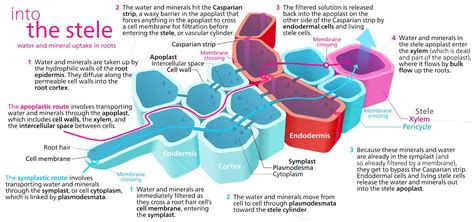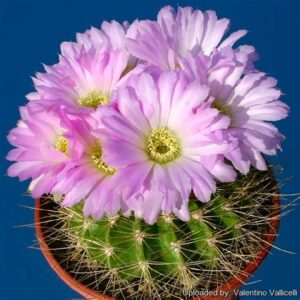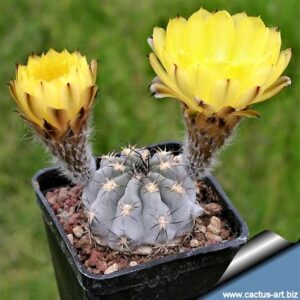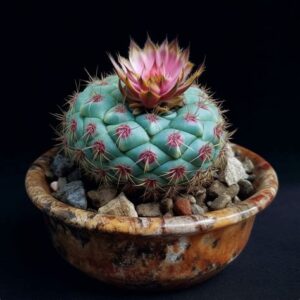Water is a critical component for the survival of all plant species, but have you ever wondered how this precious resource travels through the intricate root systems of cacti like Acanthocalycium? In this article, we delve into the fascinating processes behind water movement in Acanthocalycium roots, exploring the mechanisms and adaptations that enable these unique plants to thrive in arid conditions. In a world where water scarcity is becoming increasingly common, understanding these processes could offer potential solutions to challenges faced by other plant species.
So, what exactly is happening beneath the surface? Join me as we answer that question while confronting the remarkable ways Acanthocalycium interacts with its environment.
Water Movement: The Basics of Plant Physiology
To grasp how water traverses the roots of Acanthocalycium, we should first familiarize ourselves with the fundamental principles of plant physiology. Water uptake begins at the root hairs, delicate extensions that emerge from the epidermal cells of the root. These root hairs dramatically increase the surface area available for water absorption, making it easier for the plant to capture moisture from the soil.
Acanthocalycium is particularly adept in arid environments, where the ability to extract water efficiently is essential. The root system of this genus is not just a passive structure; it actively engages in osmosis and utilizes specialized cells to ensure optimal hydration.
Osmosis: The Nature of Water Movement
Osmosis is the passive movement of water molecules from an area of lower solute concentration to an area of higher solute concentration, occurring across semi-permeable membranes. In the case of Acanthocalycium roots, the root hairs penetrate the soil, where they encounter varying concentrations of solutes such as salts and nutrients.
The cell membranes of the root hairs act as semi-permeable barriers, allowing water molecules to enter while regulating the absorption of solutes. This controlled water uptake is vital. The high concentration of solutes within the root cells creates a gradient that draws water in, facilitating movement towards the root interior.
But how does Acanthocalycium maintain this osmotic gradient? Is there a limit to how much water the roots can absorb? These intriguing questions lead us deeper into the root’s internal structure and functionality.
Root Structure: An Adaptive Marvel
The architecture of Acanthocalycium roots is a testament to evolutionary adaptation, especially in the context of water retention. The roots exhibit a remarkable level of compartmentalization, featuring diverse cell types that serve various functions.
At the core, we find the vascular tissues composed of xylem and phloem. The xylem is responsible for transporting water and dissolved minerals from the roots upward through the plant. The phloem, on the other hand, manages the distribution of organic nutrients, primarily sugars, synthesized during photosynthesis.
A distinctive feature of Acanthocalycium roots is the presence of specialized cortical cells that can store water. These cells not only participate in the absorption process but also serve as reservoirs, temporarily holding water during drought periods. This adaptive trait helps the plant withstand prolonged dry spells, ensuring its survival.
Water Transport Mechanisms: From Roots to Stems
Once water is absorbed by the root hairs and subsequently transported through the root’s vascular system, how does it ascend to the plant’s aerial parts? The answer lies in a combination of capillary action, root pressure, and transpiration.
Capillary action occurs due to the cohesive and adhesive properties of water. The narrow conduits of the xylem facilitate the upward movement of water through tiny increments. As water evaporates from the stomata on the plant’s surface, it creates a negative pressure that pulls more water upward from the roots in a continuous flow.
Root pressure, though less significant in cacti compared to other plants, plays a role in maintaining water movement. This pressure originates from the osmotic uptake of water, which can force water upward in the absence of transpiration, primarily during the night or in high humidity conditions.
Altogether, these mechanisms create a sophisticated system that allows Acanthocalycium to efficiently transport water, ensuring that not a single drop is wasted.
Water Conservation Strategies: Surviving in the Drought
In the unforgiving environments where Acanthocalycium thrives, water conservation becomes paramount. The plant adopts several strategic adaptations to minimize water loss. These include a thickened cuticle on the leaf surfaces that reduces transpiration, and the presence of modified leaves that have evolved into spines, further decreasing water loss.
Moreover, Acanthocalycium employs a physiological practice known as CAM (Crassulacean Acid Metabolism). This nocturnal photosynthetic mechanism allows cacti to open their stomata at night when temperatures are cooler and humidity is often higher, thus reducing water evaporation. During the day, the stomata remain closed while the plant utilizes stored carbon dioxide to photosynthesize.
All these adaptations lead to increased water use efficiency. Acanthocalycium elegantly balances water uptake and retention, ensuring that it can survive where other plants may perish.
Perturbations and Their Effects on Water Movement
The root system of Acanthocalycium is not impervious to external influences. Factors such as soil compaction, prolonged drought, and salinity can dramatically affect water uptake and movement. Compacted soil restricts root expansion, making it difficult for the plant to access moisture.
In addition, high salinity levels can create an osmotic imbalance that hinders water absorption, leading to potential physiological stress. The plant’s capacity to adjust to these challenges is vital for its longevity and overall health.
In conclusion, the journey of water through Acanthocalycium roots is a captivating interplay of biology and environmental adaptation. From root hairs that extend into the soil to specialized vascular structures that transport water efficiently, each component plays a role in the plant’s survival strategy.
As we learn from Acanthocalycium, the ability to adapt and find innovative solutions in the face of adversity may very well hold the key to sustainability in water-scarce ecosystems. Understanding these mechanisms not only enriches our knowledge but also opens avenues for further exploration in the realms of ecology and conservation.
So next time you encounter a cactus, consider the incredible journey of water flowing silently beneath the surface, essential for life yet often taken for granted. How might these lessons from Acanthocalycium apply to your gardening practices or even larger agricultural systems?





Leave a Comment